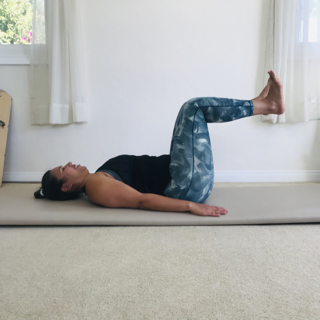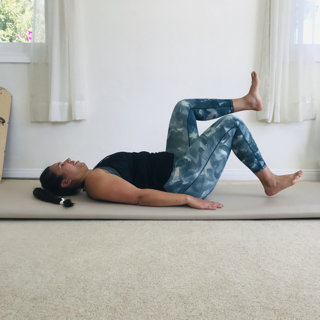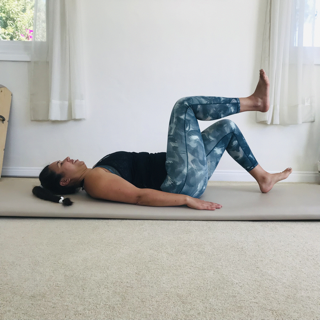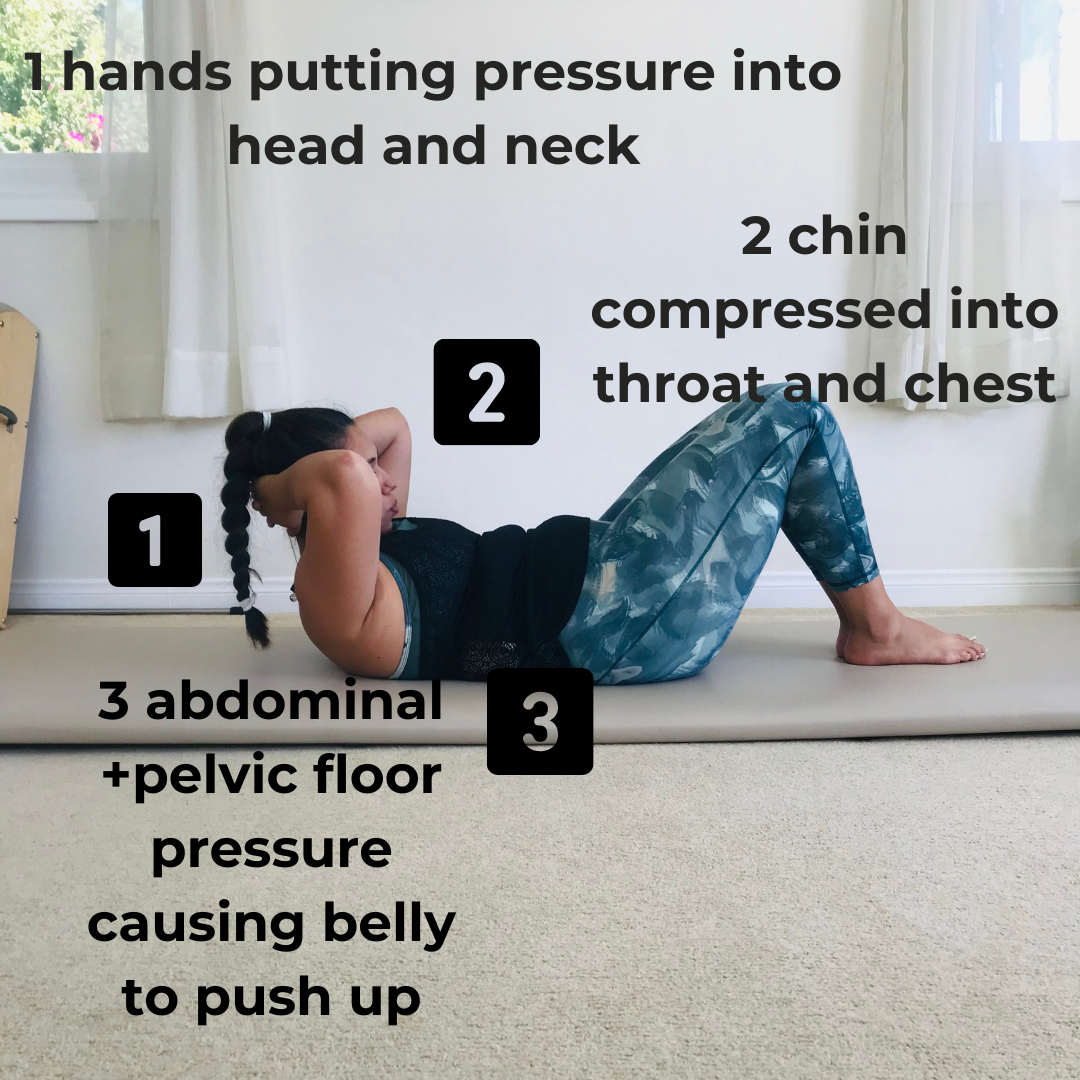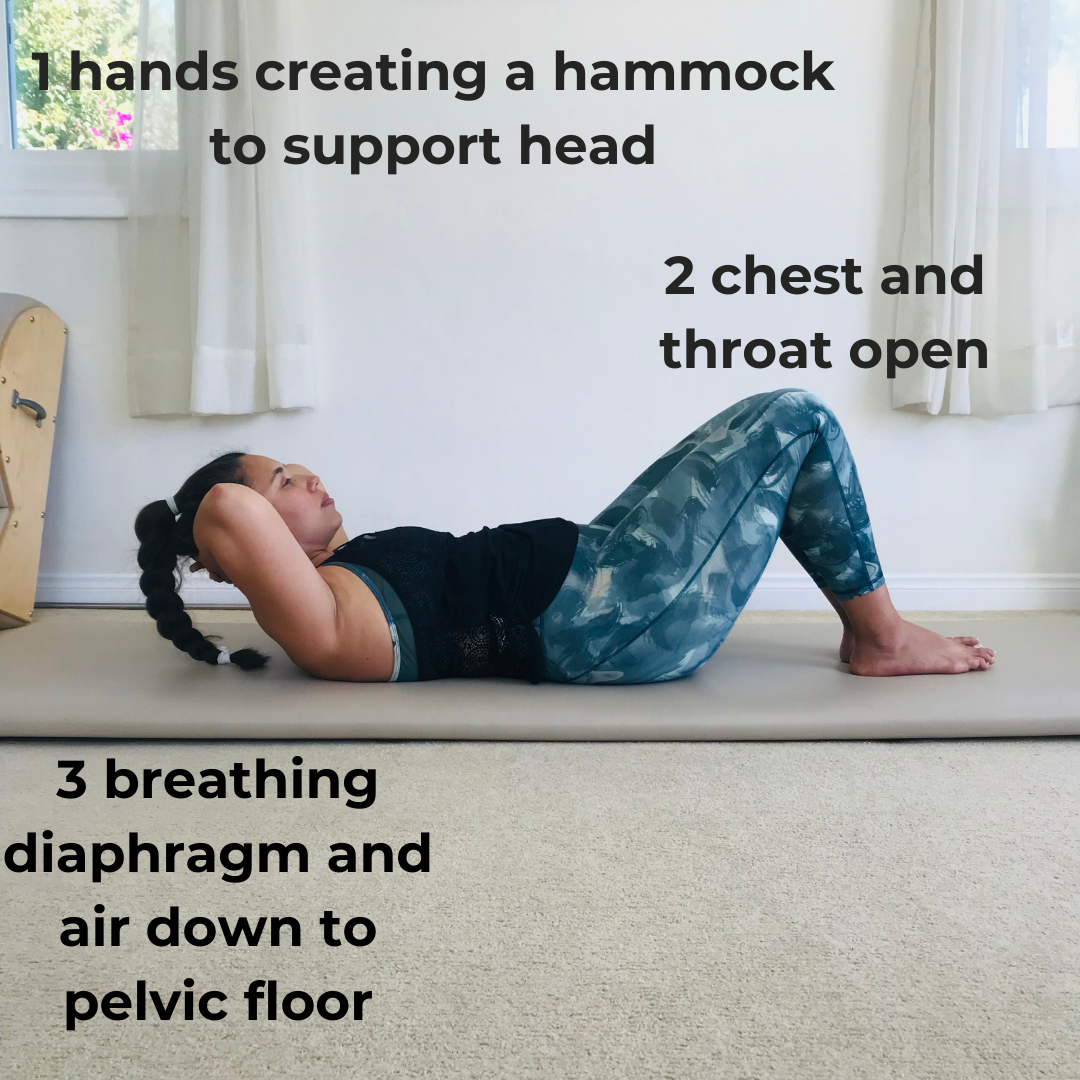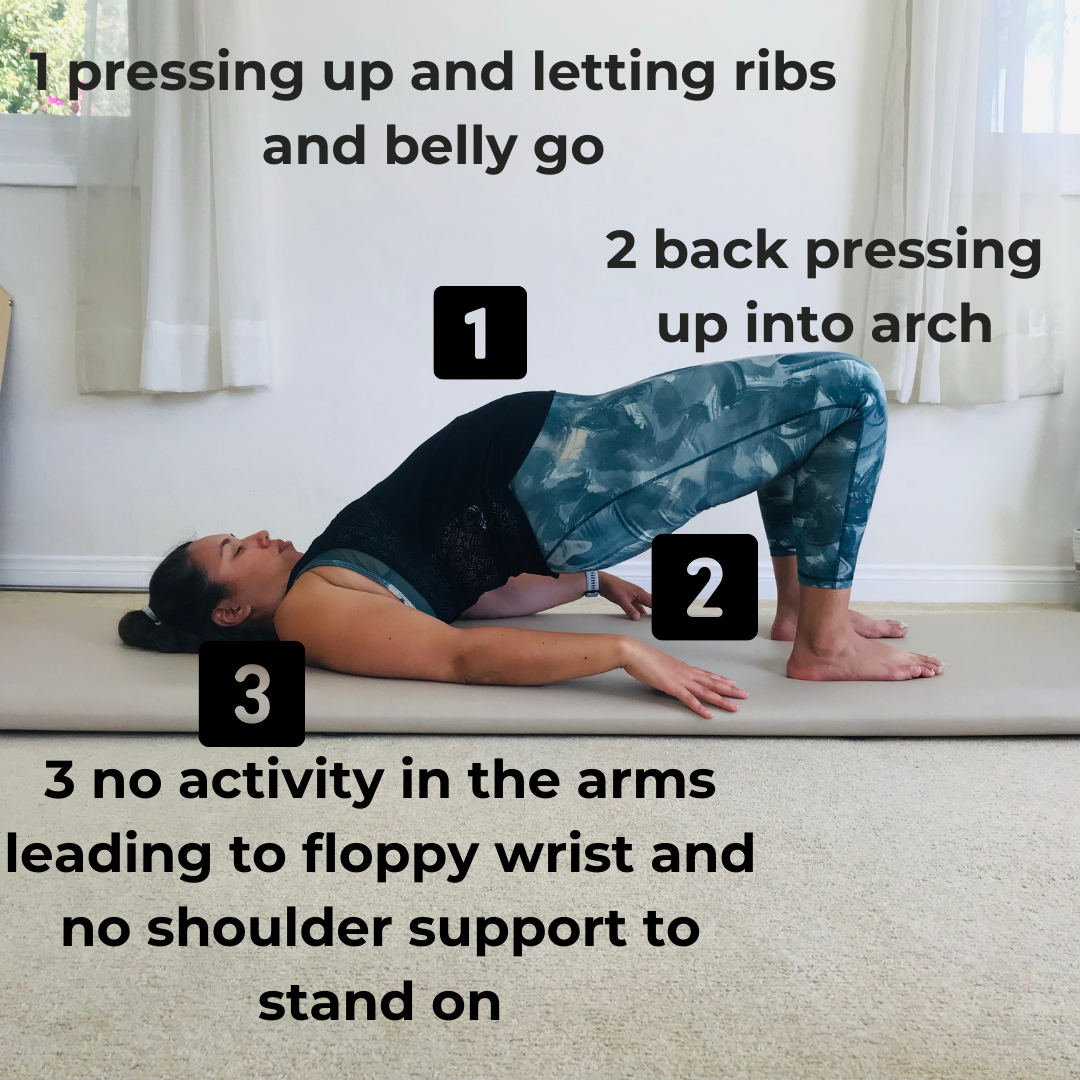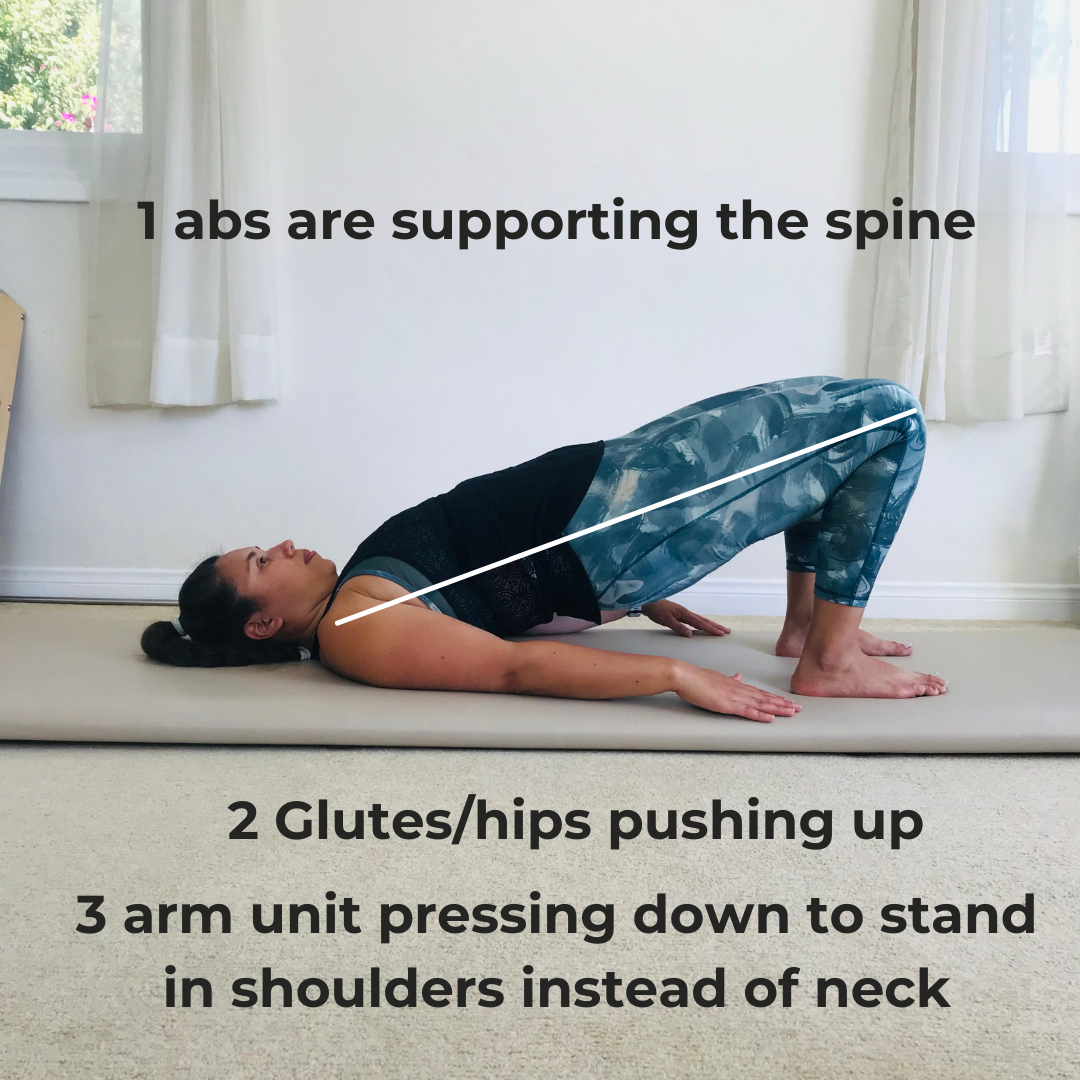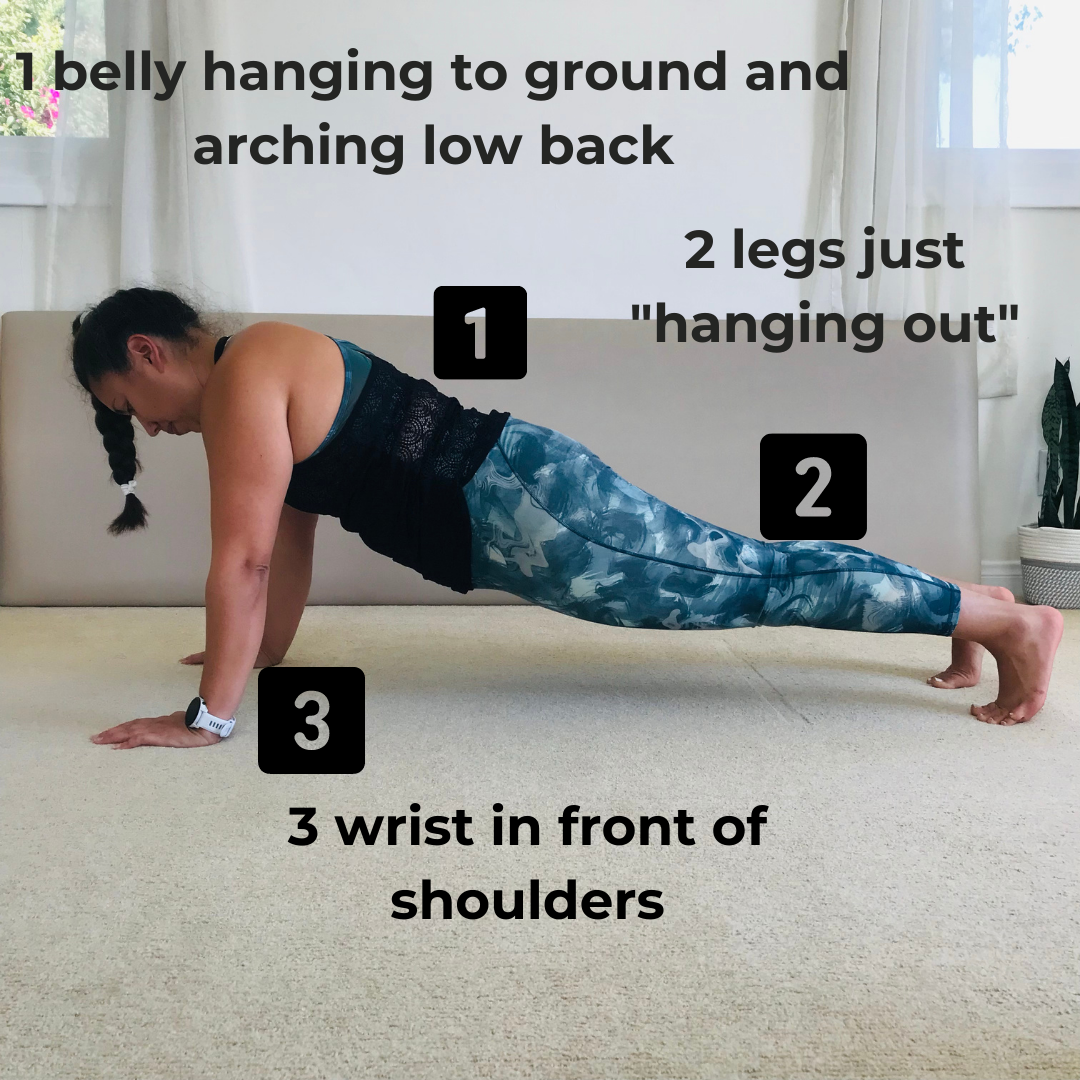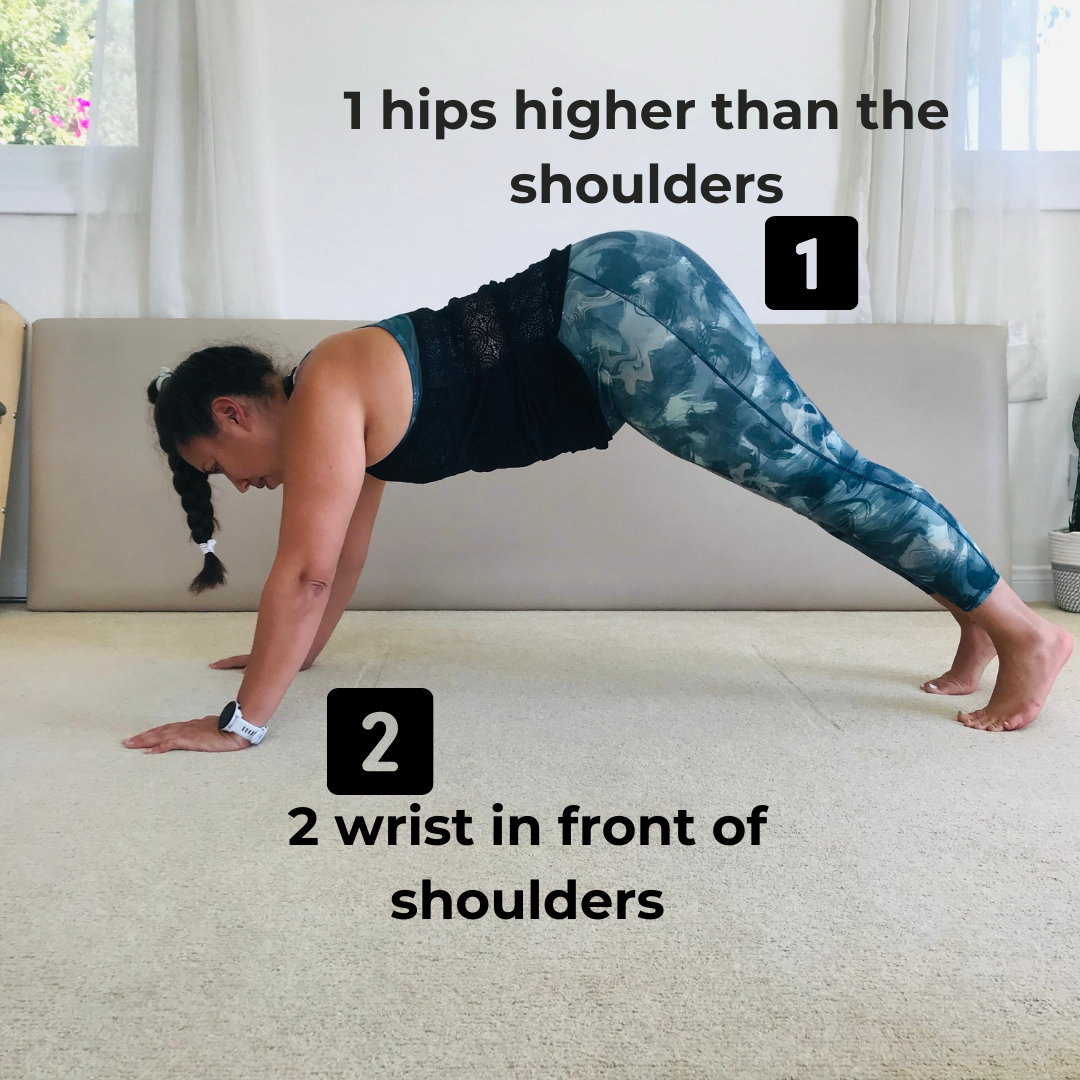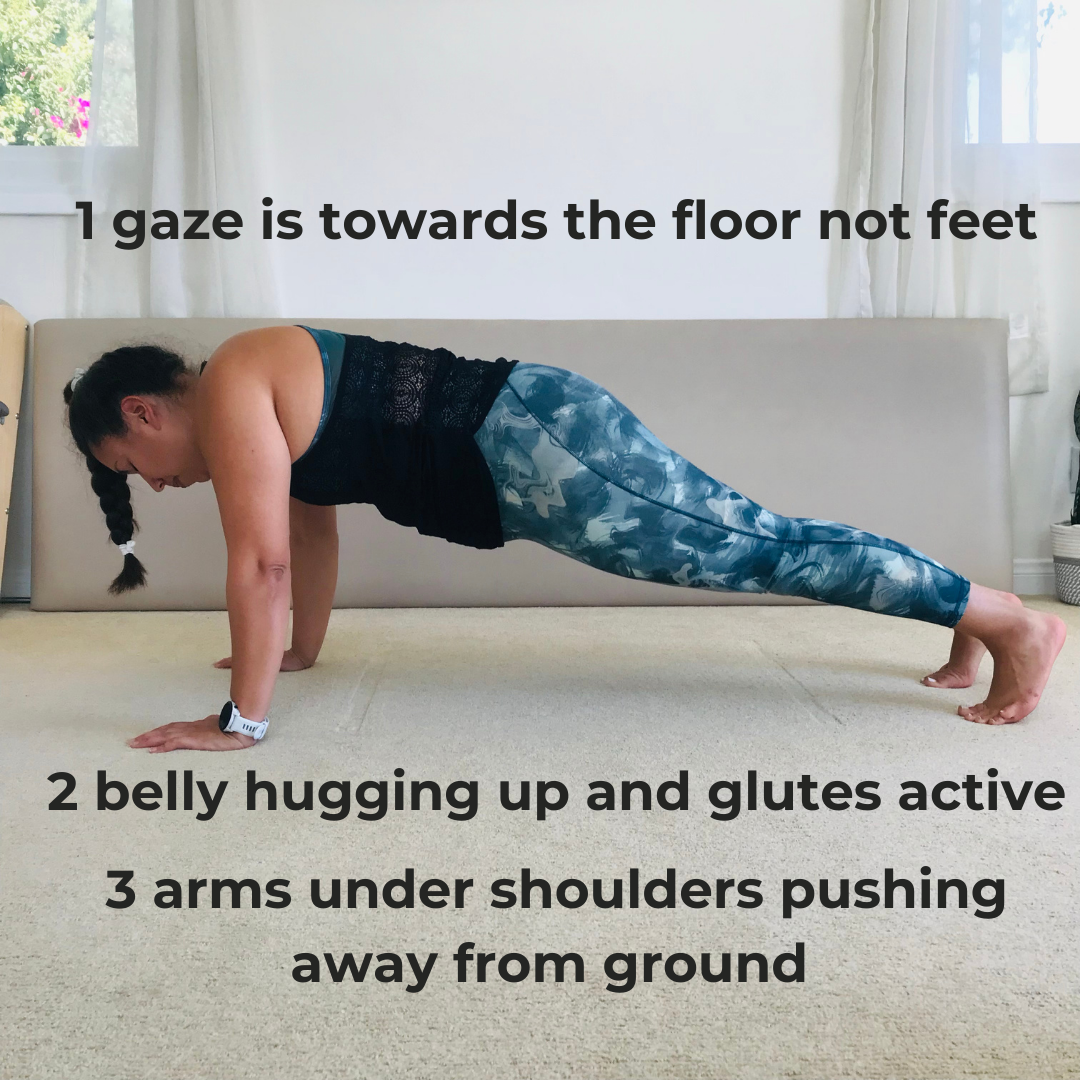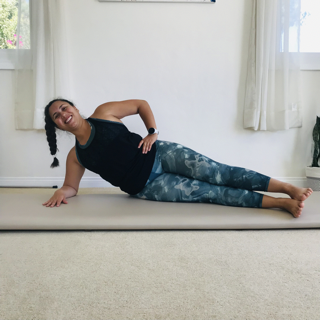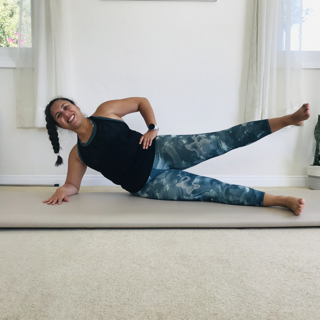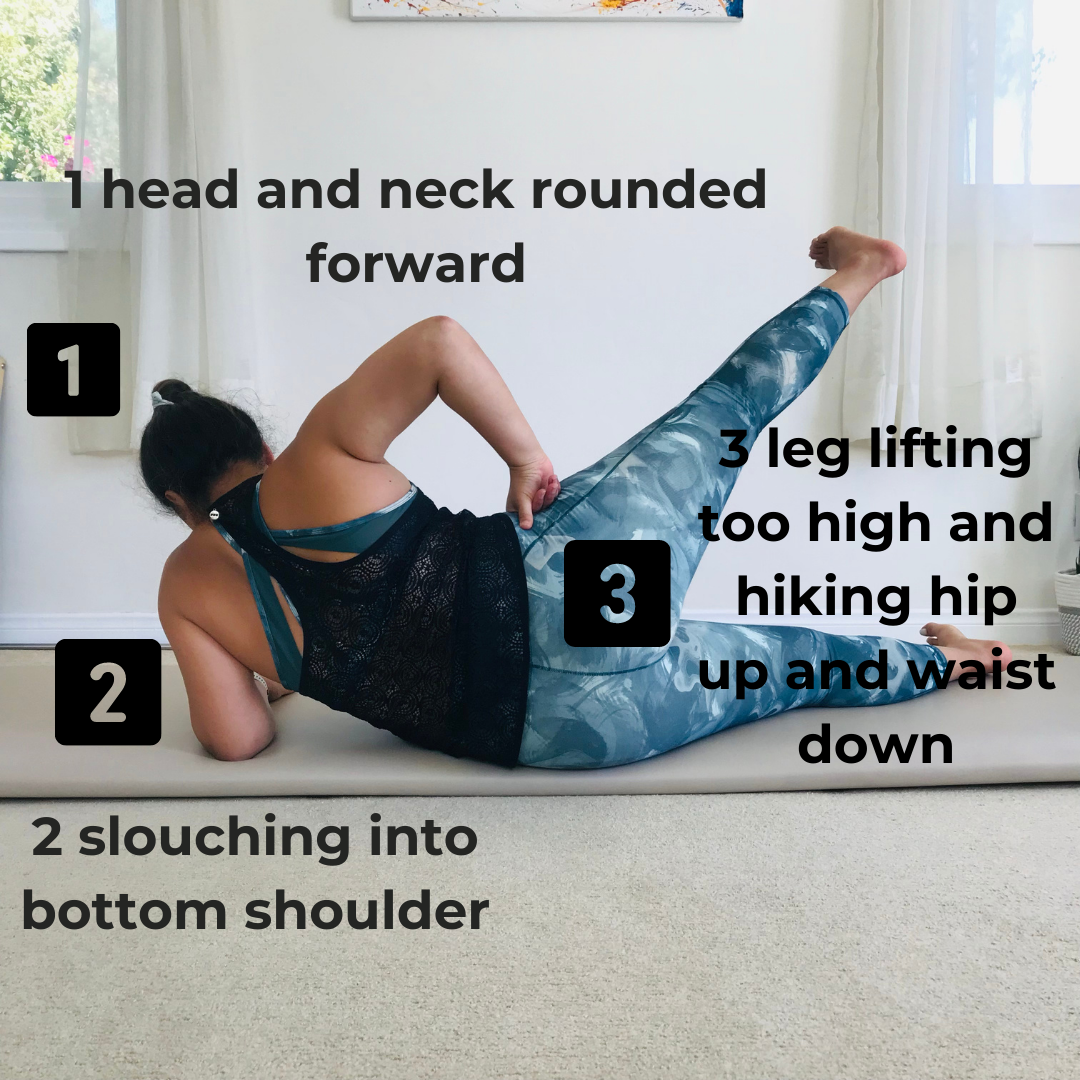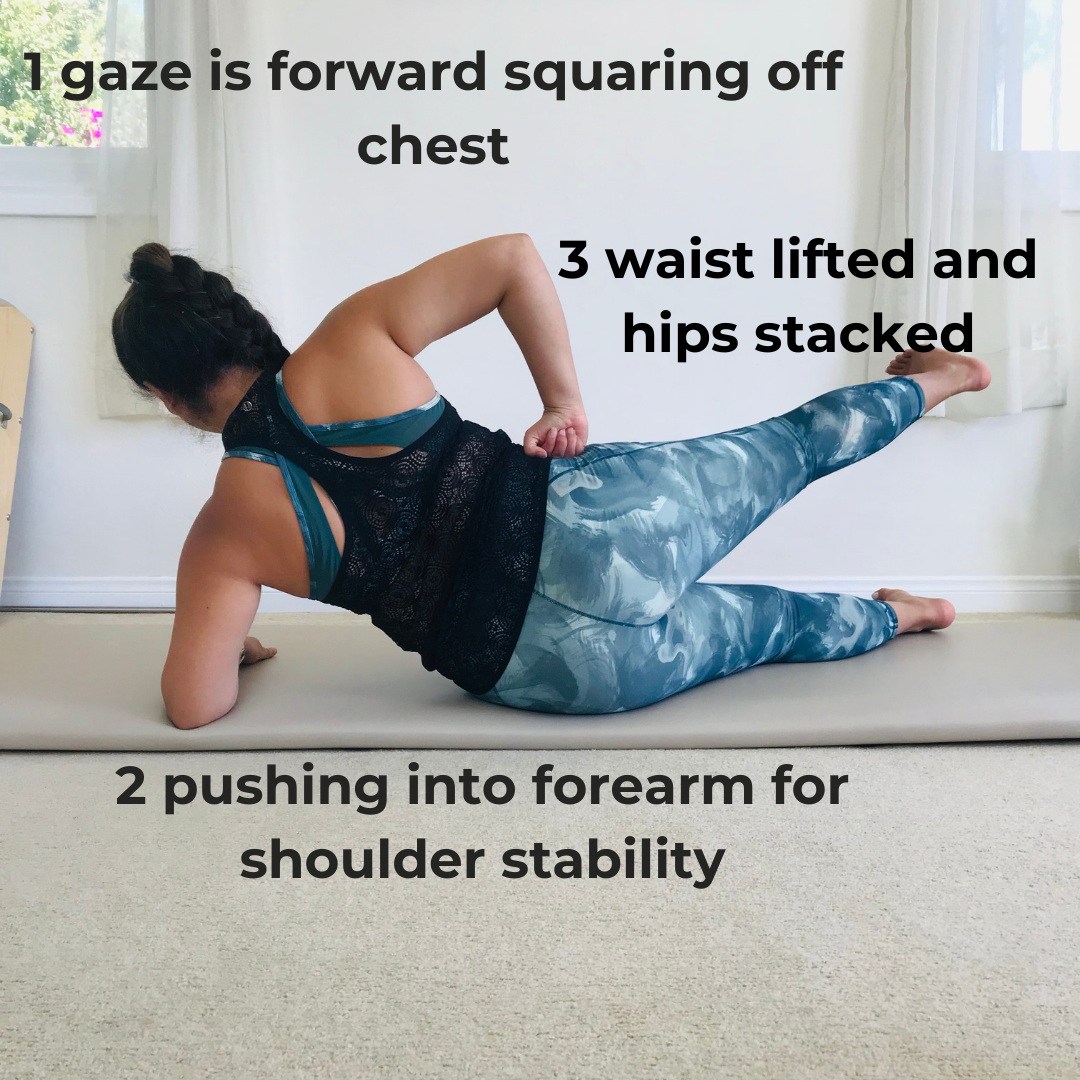5 Exercises to Strengthen your Core
What is a Core Exercise vs. what is an Ab exercise?
Throughout my years in the fitness industry (both as a participant and trainer) I have heard the terms abs and core used interchangeably. Is there a difference between the two or are they the same? Can an exercise be categorized as both a core exercise and an ab exercise if they are not the same? If they aren’t the same what is the difference between them and which should you be focusing on MORE?
Today we'll be talking about the difference between abs versus core exercises and yes there is a difference between the two. We’ll be diving into those differences as well as which types of exercises should be the focus in your exercise routine whether you are an athlete, runner or really anyone.
Talking about ab exercises and core exercises is like talking about a square and a rectangle. Do you remember talking about that in math class? I think it was geometry. A square can be a rectangle but a rectangle isn’t necessarily a square. The same can be said here. An ab exercise can be classified as a core exercise but a core exercise isn’t necessarily an ab exercise.
This is important to point out because I hear about so many people with back pain getting the recommendation from their doctor or physical therapist to do “core exercises” and a lot of times they are actually thinking of ab exercises. Then they wonder why their back pain isn’t getting any better with all the ab exercises they’ve been including into their routine.
Defining Abs vs. Core
What are your abs?
Your abs (aka abdominals) are the muscles on the front side of your trunk. Most of the time people think of six pack chiseled abs, and yes this is part of the abdominal muscle group but this is actually just the top most layer of your abdominals known as the rectus abdominis. That's the muscle that we commonly call the six pack and then there are three other main layers of our abdominals which are the obliques, and transverse abdominals. The obliques are split into two types, internal and external obliques, which is based on the orientation of the muscle fibers that make them up and how they sit on our body. The transverse abdominals, which are commonly referenced in Pilates exercises are the deepest layer of abdominals and it is like a vest that goes from our ribs all the way around to our back and attaches down to our pelvis.
So if & when your provider has recommended you to do core exercises, a majority of the time they are referencing your transverse abdominals. As the deepest layer it plays a considerable role as a stabilizing core muscle that's so important for reducing back pain.
Photo Credit: What is the transversus abdominis?
I know your probably thinking “Great to get rid of my back pain all I have to do are TA exercises. Now show me the exercises so I can get started!”
Well hold on a minute. The core is actually a much bigger portion of the body than most people think and the transverse abdominis is just one part of your core that needs strengthening. My favorite way to describe the core is as a vest. Everything the vest touches is the core (anyone else here read that with a Mufasa tone?). It includes our shoulders, back, ribs, belly, hips, butt and pelvic floor. Yah, it’s a pretty long freaking vest.
So how can we learn ways to activate these things so that we start using them in movement and they become functional rather than just a clenching of the whole body?
I like to think of the pelvic floor, diaphragm, ribcage(yes your ribs have little muscles in between each bone called your intercostals), and all the rest of the vest we mentioned above operating like a pillar or a support beam that is holding the load of the body. To work your core is to not actually learn how to tighten up a few of those muscles really well individually. It’s actually learning how to activate the entire pillar as a unit and then keeping that activation within all these dynamic movements that we do. Things like running, hiking, climbing stairs, pivoting in the kitchen or picking up your kid. Keeping us strong, supported and confident in movement for that are actually meaningful and purposeful for us.
Strengthening our entire core to create a stable base will help us better use our extremities. Without it, there is going to be an increased load in our joints. Think about the last time you did a plank and maybe felt excess pressure in your wrist, elbow or even in your lower back. This increase in pressure distally (away from our midline) typically means we're lacking control, strength, and stability in our center. There’s a reason that we call our core/center the powerhouse in Pilates.
Sometimes I feel we want to progress to the “cool stuff” like plank jacks, mountain climbers, ball slams, without mastering the basics. Without having the awareness of working everything that we want within the core and building the felt sense of what is internally happening within your body. That's when it can become so powerful is when you understand how to hold the ribcage in, how to knit the abdominals together instead of clenching or “white knuckling” your abdominal muscles. If you’re doing the “cool stuff” and still having issues when you bend down to pick up groceries or throw the ball around with your kid… that’s a sign that it’s time to re-evaluate how you are engaging your core throughout your workout.
Re-evaluate your core strength
Now let's reevaluate your core exercises. How do we get started with building a foundation so that we can start to take these techniques into our lifting, Pilates exercises, and ultimately our day to day life? First, we're gonna get started with a dead bug.If you're a little bit more of a visual learner, go ahead and tap the YouTube video below to see these exercises in action and to follow along with me as I do these exercises with you.
How to do a Dead bug
There are a lot of different variations of this exercise and the one we are going to focus on is moving the legs one at a time.
As demonstrated in the pictures above the exercise is done laying on your back. Before we even lift up our legs, we're going to think about the positioning of the back. I want you to feel your tailbone heavy into the earth as well as the upper middle back. This is where I see a lot of people “clenching” or gripping in the torso area that I was mentioning earlier in this article. It’s common for people to feel the urge to smash their back down into the floor beneath them in an attempt to brace their core. What this actually does is tighten the low back muscles, typically the QL which is already tight and cranky in people instead of the lower abdominal muscles.
Sooo how do we prevent this? I want you to picture having a saltine cracker underneath the small of your back. There is enough pressure generated from the lower belly area to be able to touch the cracker but we don't want to smash the cracker into any crumbs. This also allows you to not only have the support for the lower back but also keeps the sacrum down so that your pelvis headlights can stay facing towards the ceiling in a neutral position.
Once you have that cracker with a little bit of pressure underneath the lower back, lift the legs to tabletop where the knees are directly over your hip bones. Think about the hip joint opening so that the thigh bone reaches away from the trunk to bring the leg towards the floor. You can even place a ball like the size of a soccer ball underneath the backside of your knee to make sure that the knee joint is not moving and it's actually the hip joint. You’ll do this one leg at a time alternating each time a leg makes it back up to table top. Your lower abs are working to control that femur bone moving away from you and the lower abdominals are working to pull the femur bone back in towards you.
How to do a Chest Lift
The next foundational exercise is a chest lift, or as we like to call it in Pilates a “C” curl. It is similar to a crunch, but slightly different. What I want you to think about is making your spine into the big letter capital “C” hence why we call it a C-curl and not a crunch.Instead of thinking of tightening or smashing yourself forward into a ball as the word crunch can sometimes imply, I want you to think about creating length in your spine as you try to lift your chest up and forward towards the angle of your knee caps. When you imagine your spine getting longer and up, also think about the little bit of pressure into the cracker again. So we're not trying to squish our belly together, we're trying to lengthen the backside of our body and also create a curve through the front side of our body to help lift your shoulder blade tips up and towards the ceiling.
I know what you are probably thinking… “Hey Laura, you said the core was different from ab exercises. So far all we’ve done are abs.”
How to do a Bridge
Next up we’ve got a glute focused exercise! Now for these bridges, we can use a little bit of our arm pressure. In Pilates, we actually call this a shoulder bridge because your backside of your shoulders are working to help support you. Place your feet hip width apart and your hands start out by your side.
Now as you press your hips upwards towards the sky, you still want to have that same inward pressure of your belly to your back that you did in your dead bug and that you did in your C-curl. This is another reason why I focus on building up a “felt” sense with my clients. Being able to recall that sensation will help you apply it into other exercises where we are not on our back and ultimately in different planes of motion.I commonly see people do their bridges and splay their guts out, which yes works the hips but it also puts a heck of a lot of pressure in the lower back since the abdominals aren’t supporting. Think about hugging your guts to your organs and into your back as your hips hinge up to the sky. I also want you to think about those whole arms, not just your hands pressing into the ground as the hips press up. This will help to activate the back of the shoulders and upper back that your core “vest” touches. Remember though, as your arms press down your belly has not changed, it's still hugging your guts.
Pretty cool how a simple bridge has now turned into a full body exercise. It's working in the back of your shoulders, your belly, your butt in your hamstrings.
How to do a Plank
In your plank position, line up your hands underneath your shoulders. I like to have my feet about hip width apart. They really can go wider than shoulder width or they can even be placed all the way together. Just know that the tighter the legs are, the less base of support you have so it is going to make the plank a little bit more challenging.
Push the ground away like you're really trying to push to the top of your pushup. That's one of the most common things that I see people missing out on for their planks. They get into their plank and they're kind of just like standing in their arms without any gusto or intensity behind it. When you imagine that you're pushing yourself off the floor it’s going to engage more of the rib muscles that are part of your vest, your serratus anterior, lats and even intercostals.
The abdominals are still hugging backwards the same way as they did in your dead bug, your c-curl and even the same hugging of the guts that you had in your bridges. Can you see how everything is layering on in different planes?
How to do Pilates Sidekicks
Lastly, we're gonna do our sidekicks. The way that we're set up for our side kicks is kind of like a side plank, but slightly different.
Notice how the bottom leg is still connected to the floor slightly supporting you but still very much active in the side hips and waistline. What I like to tell my clients is that the top leg is a little bit of a distraction for the work that is going on for the side of the body closest to the floor. As the bottom side presses down the top leg is going to be moving in variation directions.
Similarly to the Hundred, the moving leg is trying to destabilize the trunk and torso as it is moving in space. Yes, it still is working the outer hips and glutes and this is also an exercise that focuses on antirotation for the trunk/core work. The shoulder stabilizers are working to keep you facing forward, the obliques are working to keep your side waist lifted and off the floor, your side booty is working to keep your bottom leg anchored to the ground and keep you from falling forward.
The first and only movement we’ll discuss here for the sidekicks is the up/down variation. Imagine that you have your back body up against a wall. Your top leg is going to lift up to the sky and lower down to the ground. As you lift up, it's going to challenge your side waist balance. You might feel a little wiggly or that you fall into the ground as the leverage of the leg is up. Take that information in and notice what your body wants to do. As the leg is in the sky see if you can lift your waist up higher and if you can push your shoulder into the ground more. If you feel wiggly from front to back see if you need to hug your belly in a little more so that your abdominals can also be turned on here.
As the leg lowers down,it comes down with control, not a plop. The inner thighs and pelvic floor, zipper in and together to bring the legs back to start.
Want to learn more exercises to strengthen your core? Drop your information below to download an at home, no equipment based Intro to Pilates workout.




